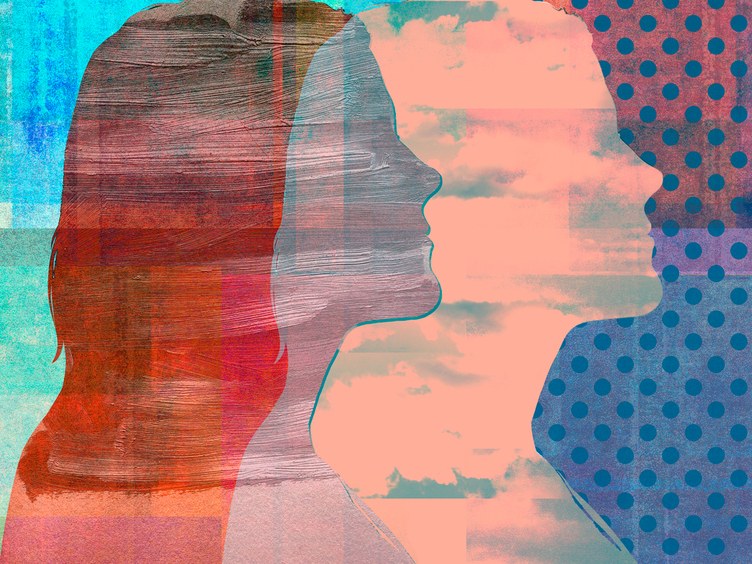The first step to achieving, both inner and world peace, is through understanding.
Instead of pushing away or shunning what is different to you, what stands out, maybe listening to and understanding the ‘other’ might teach you something new or even change your perception on something. And so – understanding what some words weigh and what their origin of usage was, and how they got to where they are now is one way of picking the right choice of words when it’s our turn to speak.
This week, we talk about Bipolar Disorder; The origin of the word, the mood disorder, the misconceptions around it and what it means today.
What is Bipolar Disorder?
Bipolar disorder or manic depression is a mental illness that causes extreme shifts in mood and fluctuations in energy levels; where alternating episodes of severe emotional highs and lows are experienced. Excessive happiness and excitement, rapid speech and poor concentration, less need for sleep, increased energy, restlessness, a high sex drive, and impulsiveness are all amongst the symptoms of a manic state.

A bipolar person in depressive periods encounters major sadness and uncontrollable crying, irritability, insomnia, feelings of worthlessness as well as a loss of energy and interest.
A Breakdown:
Bi: Two
Polar: the poles of mood being the highs and the lows
The terms used for the bipolar extremes are “mania” and “depression” and both their origins and the relationship between them goes back to the Ancient Greeks. Mania descends from the Greek word “mainesthai” which is to be mad – linking it to the rage and madness in manic episodes. The term depression has been developed recently and is derived from the Latin word “deprimere”, to ‘sink down’ or ‘press down’ which accurately represents the depressive incidents.
The relationship between them can be traced back to Aretaeus of Cappadocia, who was a physician and philosopher. He described “a group of patients who ‘laugh, play, dance night and day,” and are “torpid, dull, and sorrowful at other times”. It wasn’t until the modern era where his realization that both moods result from the same disorder was taken into consideration.
The History of Bipolar Disorder
The modern bipolar disorder concept dates back to the nineteenth century when Jean-Pierre Falret, a French psychiatrist, “presented descriptions of the disorder to the Académie de Médicine in Paris” in 1854. He called the disorder folie circulaire (circular insanity) and discovered that it was common in families and had a strong genetic foundation. The term ‘manic–depressive psychosis’ was developed as a name to identify the disorder.
In 1902, German psychiatrist Emil Kraepelin differentiated between schizophrenia and bipolar disorder and used ‘manic depression’ to describe it. Mental illnesses that revolve around mood problems were labeled under manic depression until the early 1950s. In 1950, Karl Leonhard introduced ‘bipolar’ as a title to describe the psychiatric disorder, replacing the term manic depression.
So why bipolar instead of manic depression?
According to very well mind author Marcia Purse, “ Manic depression has generally been used to denote a wide array of mental illnesses, and as classification systems have become more sophisticated, the new term of bipolar disorder allows for more clarity in a diagnosis.” Other than bipolar disorder being an appropriate clinical term it also doesn’t include the word manic which is stigmatized greatly.
Bipolar disorder was added to the Diagnostic and Statistical Manual of Mental Disorders, the DSM, in 1980.
Types of Bipolar Disorder
There are four types of bipolar disorder in the DSM and they are:
- Bipolar I Disorder which is characterized by having severe manic episodes that last for a week at least. Depressive episodes also occur at the minimum for two weeks.
- Bipolar II Disorder and it is defined by patterns of depressive and hypomanic periods – they are not severe enough that a person would require hospital care. No manic episodes are experienced as well.
- Cyclothymic Disorder which is also known as cyclothymia and is a milder type of bipolar that is diagnosed when both hypomanic and depressive periods occur for at least two years.
- Bipolar disorder or not otherwise specified (BP_NOS) and that’s when someone has bipolar symptoms that don’t match the other three types of bipolar disorder.

Managing The Symptoms
Although there are no cures for bipolar disorder there are some treatment options that include both medication and therapy.
Common medications include mood stabilizers such as lithium and atypical antipsychotics such as quetiapine. Also, talk therapy is found to be an effective treatment method alongside medication. Cognitive behavioral therapy, functional remediation, family-focused psychotherapy, psychoeducation and interpersonal are amongst therapies that help manage the disorder.
Sticking to a long term treatment plan is key to decrease the severity of the disorder! “Strategies such as yoga, mindfulness, and meditation may bring more awareness to changes in mood. Self-care activities, including bathing, reading, listening to music, or journaling, may also help moderate mood shifts before they escalate,” Medical News Today. With these self care management strategies, a person with bipolar disorder is empowered to control the rapid mood shifts.
Bipolar Disorders in Today’s World
Today many misconceptions revolve around bipolar disorders that indeed should be debunked. A very popular one is that bipolar disorder is a rare condition where “up to one person in fifty will develop bipolar disorder at some time in their lives”, SANE.
I’m sure you’ve also heard people associate bipolar disorders with mood swings or pretty much think they’re the same, when the disorder is really much more than that! I also don’t know why people think manic episodes are cool – yea its good to be happy – but these episodes are a severe mental illness. Without coping mechanisms or treatment methods it can have detrimental effects on an individual’s life and the patient can detach from reality.
Lastly, Dr. Dalia Rizk, a specialist psychiatrist at Al Zahra Hospital in the UAE, claims that diagnosis is not a rapid process nor is it an easy process especially in the Middle East. “In our culture, people may say, he is not close to God, perhaps if he prays more he will be fine. Consequently, people with this disorder do not get diagnosed, and don’t get the treatment they need,” Rizk adds.
Before talking about a mental disorder, history, misconceptions, and the nature of the illness – an adequate understanding of it, of course, should be taken into consideration.
World Bipolar Day is March 30, you are encouraged to spread awareness and eliminate the social stigma around bipolar disorder!
Have something to say?
Join the conversation in our Facebook Group: “The Empower Community”
Feel free to subscribe to our weekly updates to get the latest releases on all our articles & media. We include our celebrity guest’s take on Mental Health and Wellbeing.








